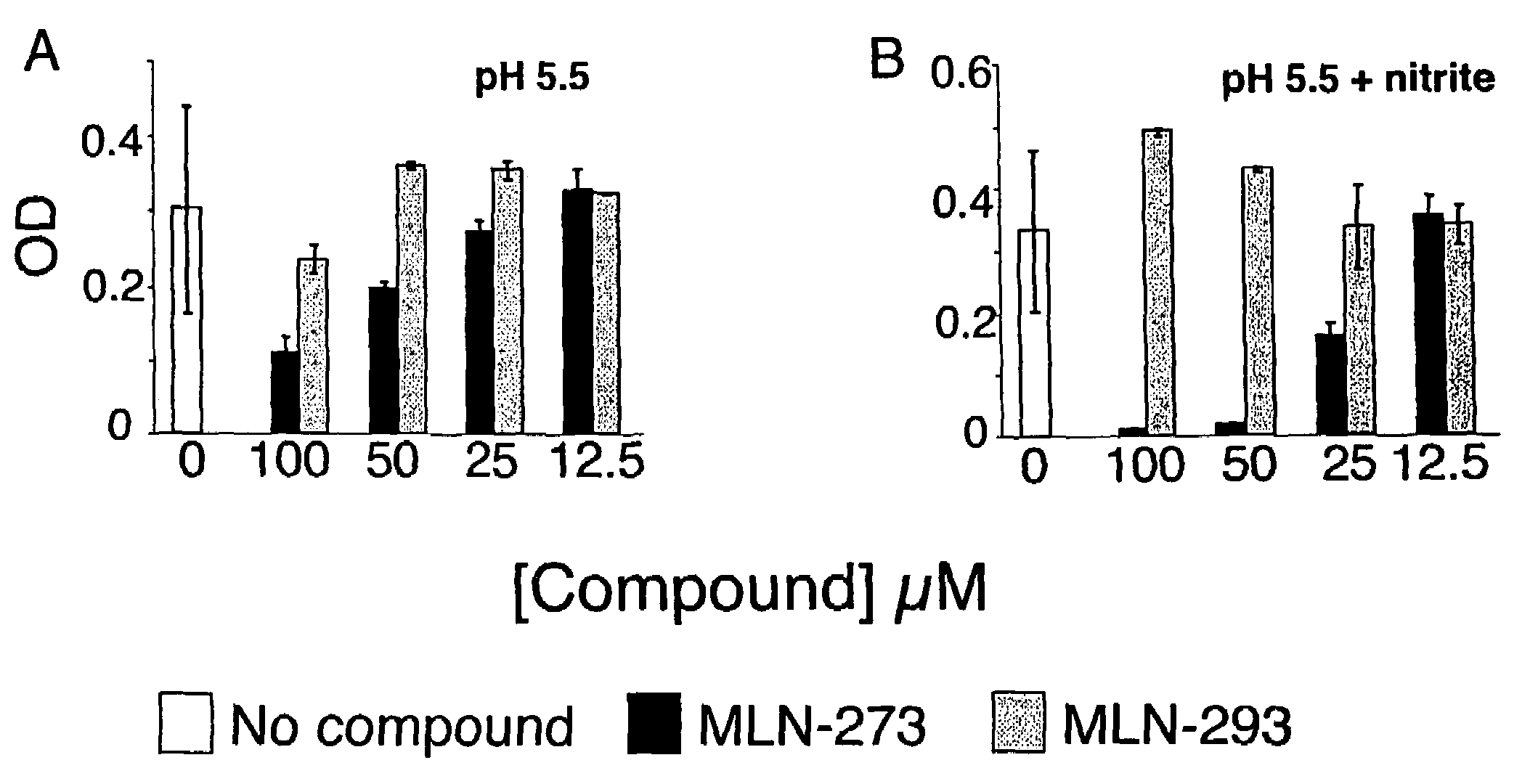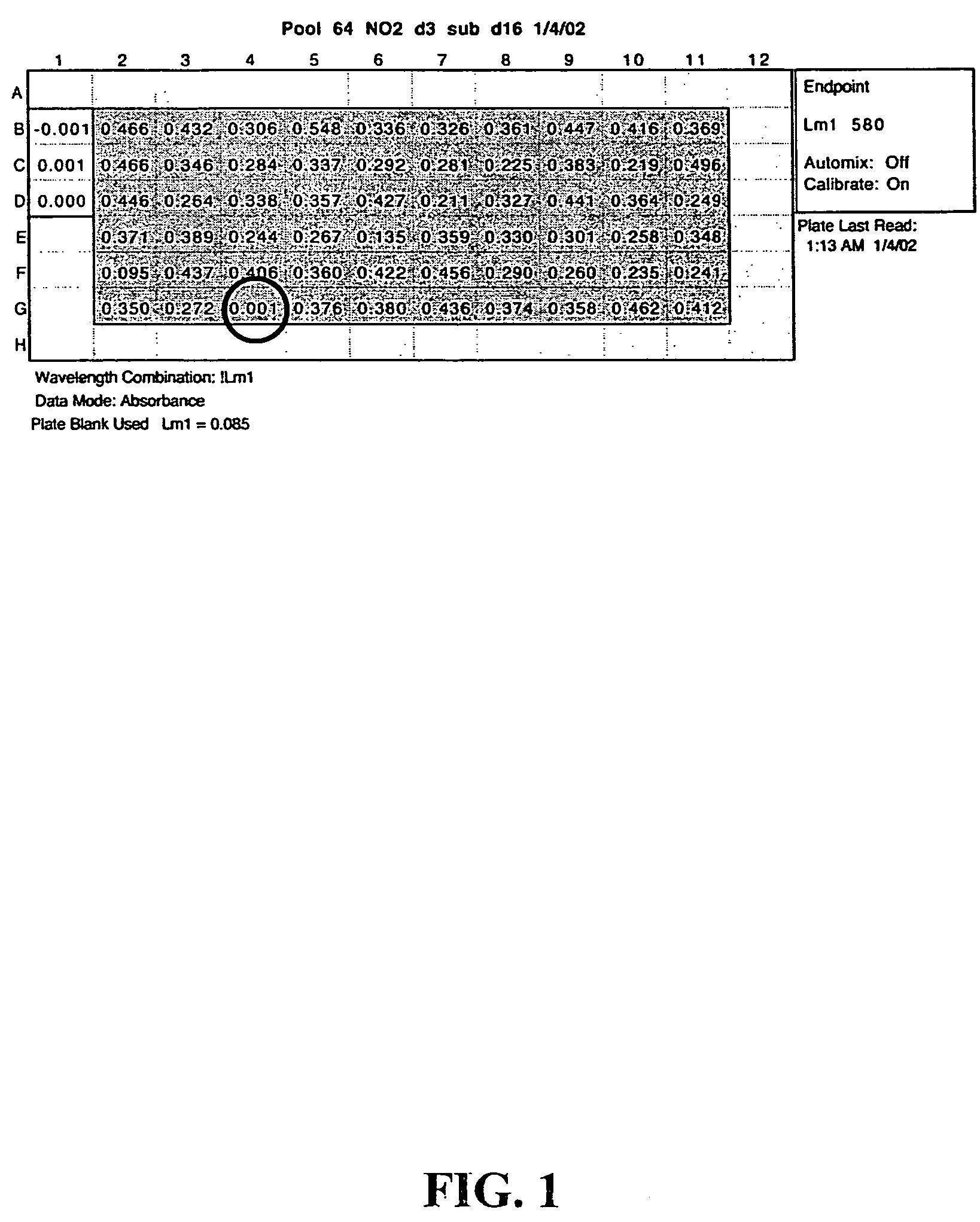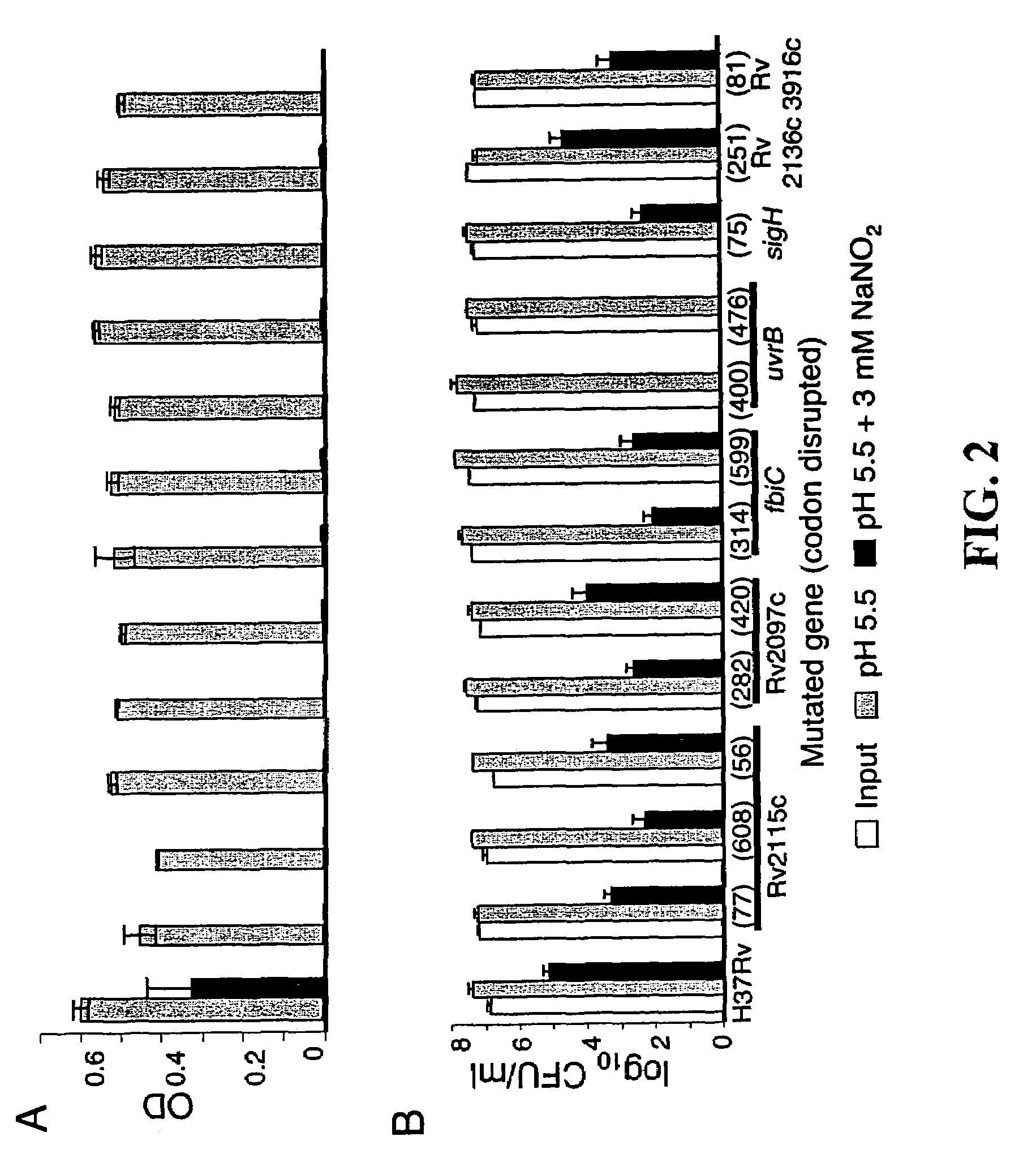Prokaryotic proteasomal proteases of Mycobacterium tuberculosis (MTB) as targets for antibiotic therapy
a technology of proteasomal proteases and mycobacterium tuberculosis, which is applied in the direction of biocide, enzyme inhibitor ingredients, peptide/protein ingredients, etc., can solve the problems of high potential for generating public fear and economic disruption, high potential for mtb bioterrorism threat, and difficult to treat, so as to and induce oxidative/nitrosative stress in the bacteria
- Summary
- Abstract
- Description
- Claims
- Application Information
AI Technical Summary
Problems solved by technology
Method used
Image
Examples
example 1
Culturing Mycobacterium tuberculosis
[0070]Mtb was grown at 37° C. in Middlebrook 7H9 medium supplemented with 0.2% glycerol, 0.05% Tween-80, 0.5% bovine serum albumin, 0.2% dextrose, and 0.085% sodium chloride (7H9-ADNaCl). To test for sensitivity to nitrite in the high throughput screen, individual mutants were grown in 200 μl 7H9-ADNaCl in 96-well microtiter plates until growth was saturated. Aliquots (10-20 μl) of each culture were then subcultured into 200 pl of 7H9-ADNaCl that had been acidified to pH 5.5 with HCl and contained 1.5 mM NaNO2. Trays were incubated at 37° C. After 3 days, 50 μl from each well was mixed with 150 μl 7H9-ADNaCl at pH 6.6. ODs were measured 14-21 days later in a plate spectrophotometer.
[0071]For CFU determinations, bacteria were plated on 7H 11-OADC agar and colonies enumerated 14-17 days later.
[0072]The two-hybrid experiments were performed as described (Karimova et al., “A Bacterial Two-Hybrid System Based on a Reconstituted Signal Transduction Pat...
example 2
Mouse Macrophage Infection
[0073]C57BL / 6 mice were obtained from Jackson Laboratories (Bar Harbor, ME). Mice deficient in iNOS on the C57BL / 6 background were from inventors' colony (Schaible et al., “Cytokine Activation Leads to Acidification and Increases Maturation of Mycobacterium Avium-Containing Phagosomes in Murine Macrophages,”J. Immunol. 160(3):1290-1296 (1998), which is hereby incorporated by reference in its entirety) or purchased from Jackson Labs. For macrophage experiments, femoral bone marrow cells were seeded into 1 cm-diam wells at 1.5×105 / well in 0.5 ml of Dulbecco's minimum Eagle's medium supplemented with 10% fetal bovine serum, 10 mM HEPES, 0.6 g / L L-glutamine, 1 mM pyruvate and 50 ng / ml recombinant mouse macrophage colony-stimulating factor (M-CSF) (R&D). After 7 days differentiation, the medium was replaced with fresh medium containing M-CSF at 10 ng / ml. Macrophages were infected with Mtb at a multiplicity of infection of 8. At indicated times, infected macropha...
example 3
Proteasomal Protease Activity Assays
[0075]To measure proteasomal protease activity, Mtb was lysed by agitation with zirconia silica beads. The soluble fraction was filtered through a 0.45 micron filter. Aliquots of the filtrate (120 g protein) were incubated with succinyl-leu-leu-val-tyr-alpha-methylcoumarin (SEQ ID NO: 1) in the presence of 0.05% SDS and fluorescence was monitored. These conditions report activity of the mycobacterial proteasome (Knipfer et al., “Inactivation of the 20S Proteasome in Mycobacterium smegmatis,” Molec. Micro. 25:375-83 (1997), which is hereby incorporated by reference in its entirety). The 50% inhibitory concentration was determined by applying the Hill equation to data from 2 experiments, each in triplicate. Epoxomicin was from Boston Biochem (Cambridge, Mass.).
[0076]For subculture after exposure of Mtb to proteasomal protease inhibitors, the initial cultures were diluted 1:4 in fresh, unacidified medium. Where test compounds were present before subc...
PUM
| Property | Measurement | Unit |
|---|---|---|
| pH | aaaaa | aaaaa |
| pH | aaaaa | aaaaa |
| time to | aaaaa | aaaaa |
Abstract
Description
Claims
Application Information
 Login to View More
Login to View More - R&D
- Intellectual Property
- Life Sciences
- Materials
- Tech Scout
- Unparalleled Data Quality
- Higher Quality Content
- 60% Fewer Hallucinations
Browse by: Latest US Patents, China's latest patents, Technical Efficacy Thesaurus, Application Domain, Technology Topic, Popular Technical Reports.
© 2025 PatSnap. All rights reserved.Legal|Privacy policy|Modern Slavery Act Transparency Statement|Sitemap|About US| Contact US: help@patsnap.com



